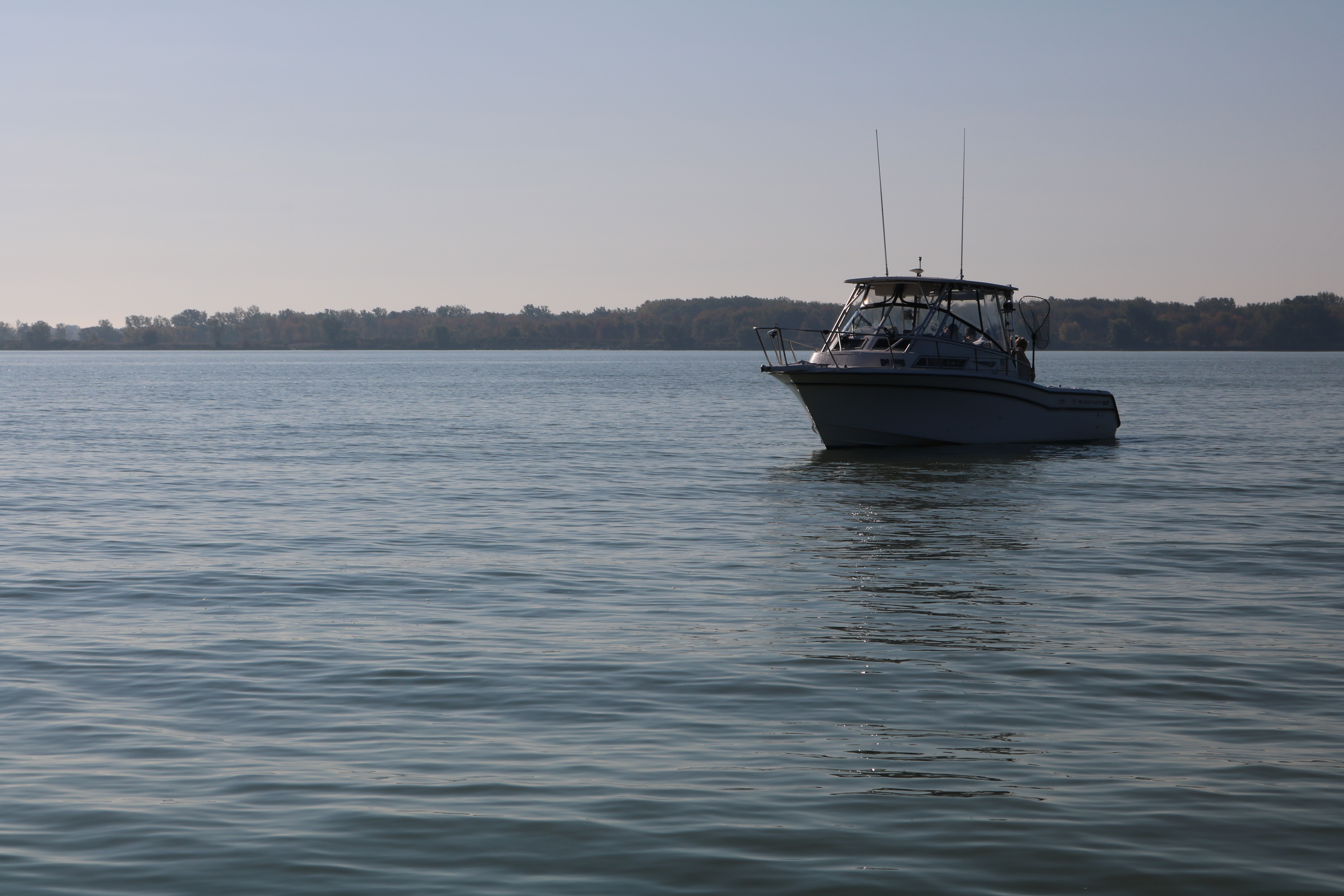We have much more to do and your continued support is needed now more than ever.
When Our Water Turns Green

It wasn’t Chicago, and it wasn’t St. Patrick’s Day. In mid-September 2017, Toledo’s Maumee River turned a bright green, matching the western Lake Erie it empties out to, carrying the phosphorus and nitrogen farm runoff which fertilizes the algae blooms that have been plaguing the area in recent years.
The New York Times reported that the algae bloom covered over 700 square miles of Lake Erie. The Toledo Blade’s front page proclaimed that the bloom stretched to Canada.
Just a week earlier, the National Wildlife Federation’s Great Lakes Regional Office hosted a #SaveOurLakeErie media tour in Toledo, where Santina Wortman, a scientist with the Environmental Protection Agency, gave a presentation on the EPA’s response. Charter boat captains led by Dave Spangler of the Lake Erie Charter Boat Association – a member of the NWF-affiliate Ohio Conservation Federation – took journalists out on the lake to see the algae up close. Captain Paul Pacholsky said that “even invasive carp wouldn’t eat this stuff,” as reported by Mary Ellen Geist of Great Lakes Now, who was also on the boat.

As reported by MLive’s Garrett Ellison, though, the EPA’s response plans do not include any additional regulatory measures to reduce farm runoff. And that’s a problem.
The EPA’s Domestic Action Plan combines the state action plans of Michigan and Ohio to meet a goal of 40% reduction in phosphorus runoff by 2025, established in the Great Lakes Water Quality Agreement, which also includes the Canadian province of Ontario. Researchers from Ohio, with participation from the National Wildlife Federation’s Great Lakes Water Program Director Gail Hesse, recently submitted a white paper, Summary of Findings and Strategies to Move Toward a 40% Phosphorus Reduction, estimating that the agencies are falling short in their efforts to curb Lake Erie’s algae growth.
“The draft plans released to date include many useful initiatives but all fall far short of providing any assurance that the proposed actions add up to meeting the 40 percent reduction target,” said Hesse. “The plans read like a grocery list without a recipe.”

Recommendations:
Based on the findings in the paper, the National Wildlife Federation has identified several steps that should be included in the EPA’s Domestic Action Plan to get it on track:
- Adopt nutrient water quality standards across U.S. states within the Western Lake Erie Basin that incorporate the binational phosphorus loading targets (40%) adopted under the Great Lakes Water Quality Agreement thereby bringing the targets under Clean Water Act authorities and programs;
- Establish programs to accelerate the adoption of subsurface placement of organic and inorganic fertilizer. Subsurface placement – applying agricultural fertilizer under the surface of the field – has emerged as a key management practice to prevent nutrient runoff from farm fields. Information should be gathered on the availability of equipment needed for subsurface placement so that programs can be designed to accelerate access and procurement for farmers;
- Mandate soil-test informed application rates (only applying as much fertilizer as can be absorbed by crops) so that fertilizer is only applied only in amounts needed for crop growth (also known as crop removal rates);
- Revise the USDA standards (NRCS 590 Practice Standard) for each state in the Western Lake Erie Basin to reduce soil test levels allowable for manure application and develop strategies and policies to aid farmers with manure application and distribution challenges;
- Include a framework for accountability as part of the commitment to adaptive management made by federal and state agencies with specific benchmarks, timelines and consequences for failing to achieve the target reductions.
For a more detailed explanation of their findings, read this blog:
While the majority of phosphorus runoff comes from agriculture, water infrastructure can help solve the problem, too. Recently, organizations with the Healing Our Waters – Great Lakes Coalition gathered in Toledo to call for increased investments in water infrastructure.
It’s important that we remember that the problem of algal blooms doesn’t just affect fish and water on an annual on-and-off basis. My friend Patrick Hogan is a father of two daughters who lives in the Toledo area.
“I just want to take my girls swimming in July and August. Or know that I will not make them sick when I boil water for macaroni and cheese in the summer months,” he told me. “Pretty soon, there will be an entire generation that has not been able to go to Lake Erie and enjoy it all summer. That generation doesn’t know about Lake Erie. It’s going to be difficult for them to ever care about it.”
This is a problem that we are capable, as a country, of fixing. We’ve done it before, and we can do it again. We just need the political will to do what it takes, and we need advocates like you to speak up for it.






















